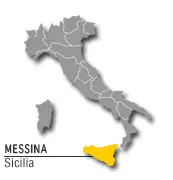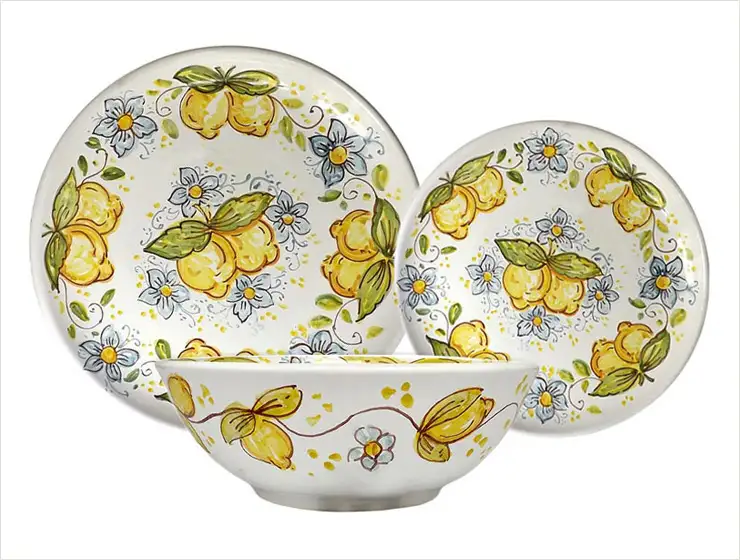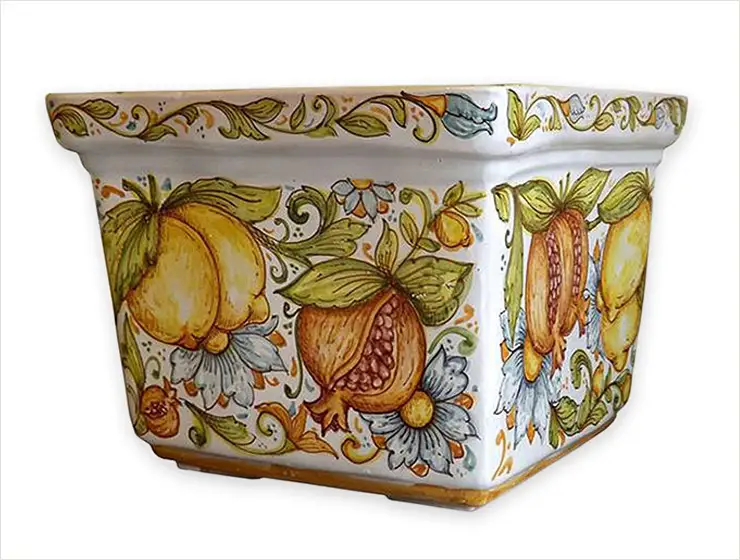MESSINA

 Located in the North-East corner of Sicily, Messina faces the mainland and welcomes the visitors driving to Sicily. It is well known for its harbour, its delicious food and wine and its large plantations of oranges.
Located in the North-East corner of Sicily, Messina faces the mainland and welcomes the visitors driving to Sicily. It is well known for its harbour, its delicious food and wine and its large plantations of oranges.
Although you wouldn’t normally expect to find artistic pottery in Messina, we were actually impressed by the quality of the ceramics made by Ghenos and decided on the spot to add them to our selection. Their richly decorated ceramic floor and wall tiles and their exquisite decoration accents are a great tribute to Sicilian pottery art.
Due to its strategic location in the Mediterranean trade routes, Sicily has been colonized many times throughout its history.
About 750 BC, the Greeks established in the island many important settlements, including Zancle, the modern Messina. The first inhabitants had already developed their distinctive pottery techniques, thanks to the abundance of clay in many areas of Sicily. However Greek ceramics were more elaborated than the local ones and Sicilian potters welcomed the new techniques and decorative styles, with their abundance of black and red glazes. The Greek influence on Sicilian pottery was to last for many centuries, despite the Roman domination of the island. In 652 AC, Sicily was invaded by the Arab forces of Caliph Uthman. Muslims governed the island for more than 200 years, deeply influencing the local culture.
Together with many agricultural items, Muslims brought to the island their beautiful tin-glazed pottery, which was to become a standard of beauty and quality all over Europe. Sicilian pottery did surrender to the fascination of the new technique and its potential. In due time four major areas became known for their distinctive pottery: Syracuse, Palermo, Messina and Agrigento.
Nowadays Messina is no longer into pottery making. Still, the tradition is alive in its province, especially in Santo Stefano di Camastra. Founded at the end of the 17th century on a soil rich in clay, Santo Stefano immediately became a large pottery district, where qualitative construction ceramics and functional pottery could be found. Over time, the local potters specialized in large containers, such as giare, fiaschi and cannate, in dinnerware and apothecary jars.
Palazzo Sergio (or Trabia) in Santo Stefano is the house of a beautiful Museum of Ceramics, hosting local pottery plus a great collection of Modern Art Ceramics made by important Italian and International artists, such as Nino Caruso, Lorenzini, Nespolo, La Pietra, Bonaldi, Pianezzola, Carlos Carré, Alessio Tasca, Rolando Giovannini, Stropparo, Tomo Hirai, Emidio Calassi, Franz Stahler, Rontini, Ravagli, Mariano, Lucietti, Mazzini, Chiucchiù, Crespi



